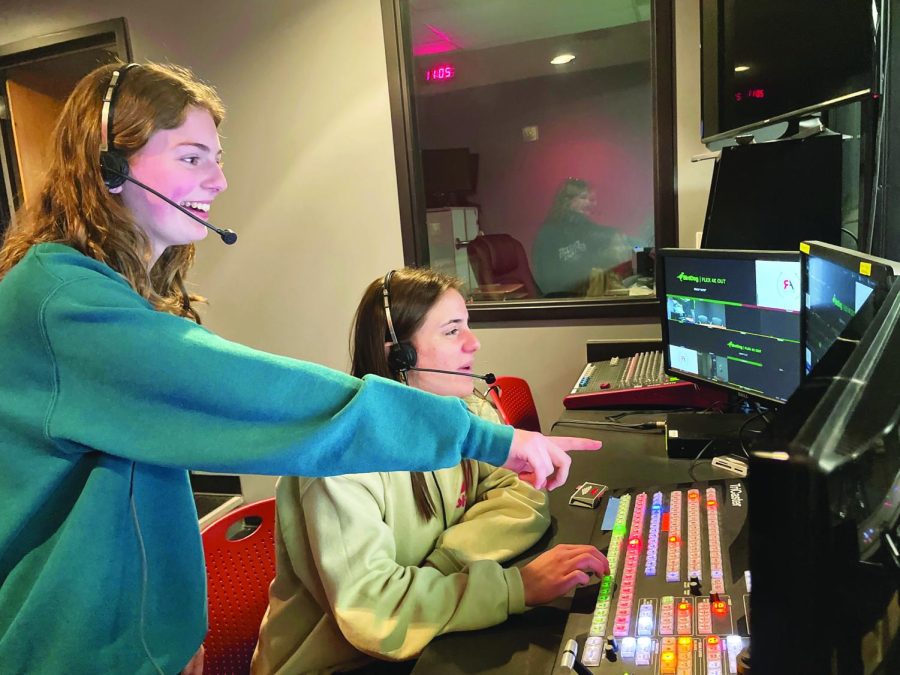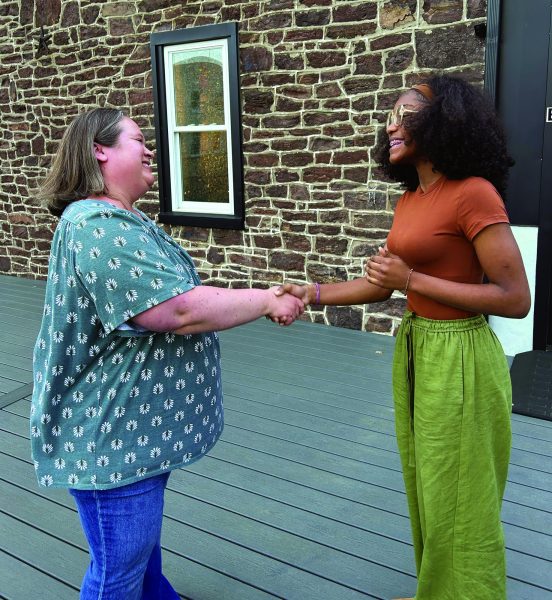RedAlert delivers broadcasts, sparks creativity
Providing news and entertainment to the high school, RedAlert serves as both an informative broadcast for its viewers and a creative outlet for its production team.
Lights, camera, action!…Keeping the show running, RedAlert staffers Kayla Herninko and Emily Tuttle work together during a live broadcast of a RedAlert episode.
In order to give students a close-up look into the world of television production and broadcasting, RedAlert presents a hand-crafted show to the high school every Friday morning.
According to executive producer Simon Hershberger, RedAlert encourages students to have fun and be creative in the production process.
“RedAlert is an environment that fosters creativity and goofiness,” Hershberger said. “Looking around my class, I see some really weird people, but I love them all because I’m a bit of a character myself.”
RedAlert adviser Brian Ruth said that RedAlert has a wide variety of personalities working together.
“I think a lot of students say, ‘Oh, the RedAlert kids, they’ve got to be outgoing,’ but you don’t,” Ruth said. “You can find your niche and be a great videographer or storyteller and then your story can be acted out by other people, so it doesn’t have to be that way.”
Making a RedAlert episode is a weeklong process. Most of the time, it starts with watching the past week’s episode.
Producer Paige Wilkinson enjoys reviewing the episode and getting constructive criticism from it.
“I do enjoy it because we get good feedback from Mr. Ruth, and it’s a good learning experience if anything went wrong,” Wilkinson said.
Wilkinson said that students in the class provide their thoughts on how to improve as well.
According to Wilkinson, the RedAlert crew looks for feedback on anything from camerawork to engagement.
After rewatching the old episode, production for the next one starts.
First comes brainstorming and scripting.
According to producer Anjolie Ware, once a concept is decided on, scripting starts immediately.
“Once I write my script, I normally ask another producer, which is the TV III position, what they think about the script and get constructive criticism on it,” Ware said.
Once the script is completed and reviewed, filming starts.
Ware said filming takes one or two classes, depending on if there are mistakes in the recording.
After filming comes editing. According to Hershberger, those two things are “the longest stretch of the process.”
When the edits are done and approved, the video goes into a folder and is prepared to be aired on show day.
Although some students are drawn to RedAlert because of an interest in television production, a lot of the interest comes from the chemistry between members of the crew.
“Students join because they see the joy that we have in our broadcast and video production and, for me, that joy is real,” Hershberger said.
For Ruth, the idea of creating something like RedAlert is a big draw of its own.
“Everything you guys watch, whether it’s on your phone or television or computer, you’re consuming media, and I feel like the people that consume it, want to create it,” Ruth said.





